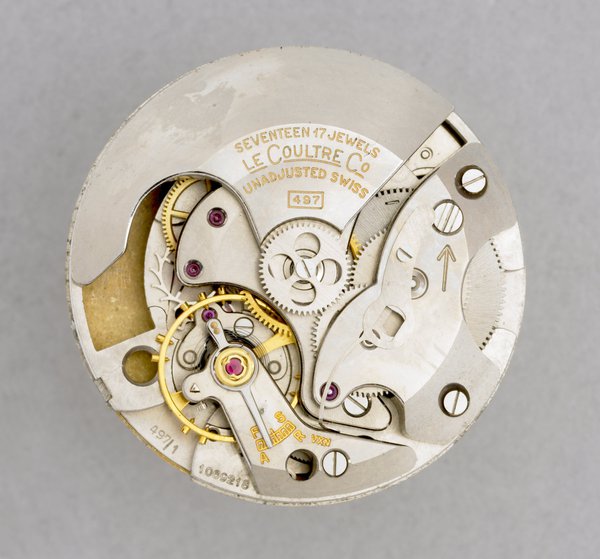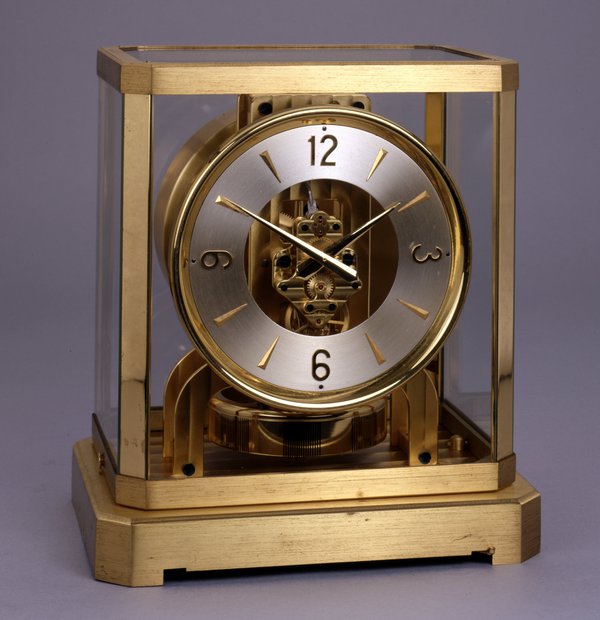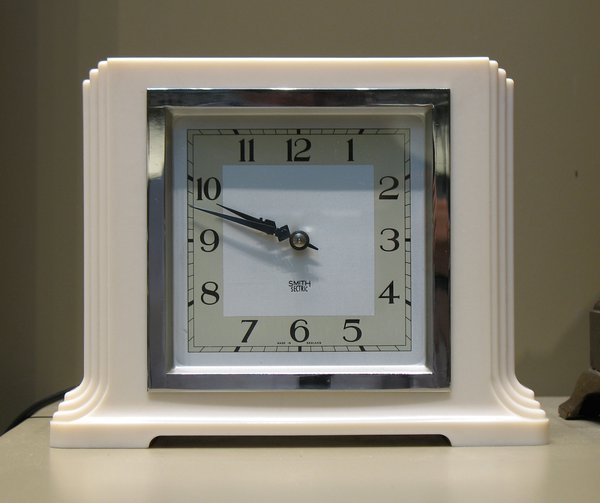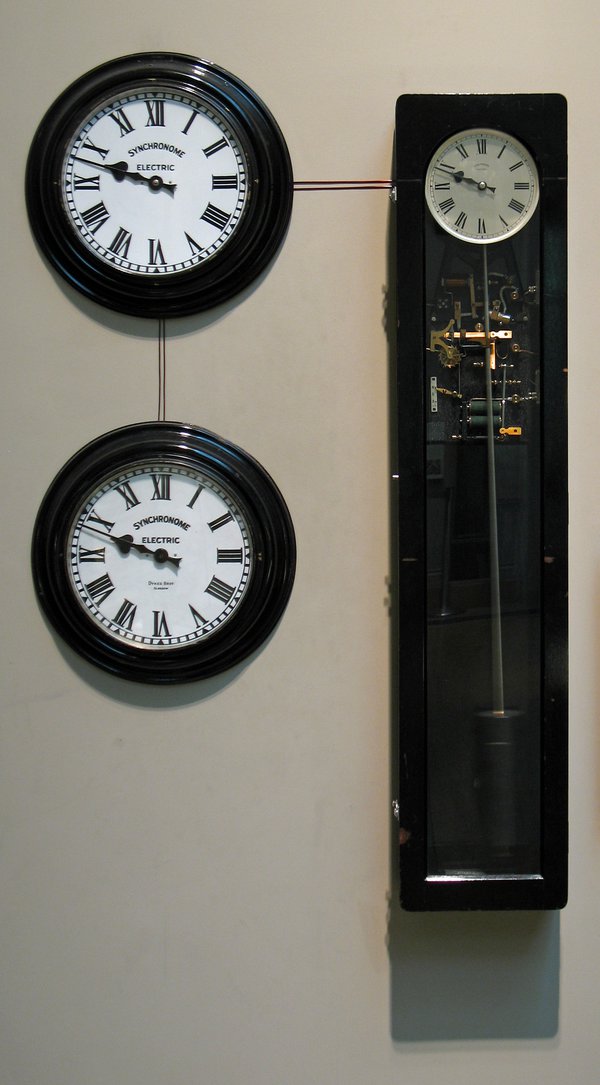Power madness
This post was written by Oliver Cooke
In a previous post I explained how mechanical clocks and watches work, with five elements – energy, wheels, escapement, controller and indicator. Let’s explore how some clocks and watches get their energy.
Mechanical clocks and watches employ kinetic energy, drawn from a built-in reserve – usually a mainspring (elastic potential energy) or a driving weight (gravitational potential energy). However, these need to be replenished, or wound-up.
We commonly wind-up a clock or watch directly, with kinetic energy from our muscles (which, before that, was chemical energy from our breakfast). In an automatic watch, a moving weight spins and winds it up as we move around.
In c.1765, James Cox made a clock that is wound by changes in atmospheric pressure. Similar is the Atmos clock, which has gas-filled bellows which expand and contract with changes in the surrounding air temperature and pressure – this movement winds the spring in the clock. This has been a very successful design – it was first introduced in 1928 and it is still being made. There was even a mechanical clock made to be powered by by an artificial heat source (see image).






Electrical clocks and watches employ electrical energy. We might provide this by putting in a fresh battery (which is a reserve of chemical potential energy), although sometimes the battery is rather larger than the clock it powers!
Mains powered clocks often do not have a built-in energy reserve and so these are reliant on a continuous supply to keep going. Solar powered clocks and watches use solar panels to convert light to electricity, which then charges a battery – this reserve is essential as the power source is not reliable – e.g. day and night.


So, those are a few examples of how clocks and watches can obtain the energy they need. Of all the types of energy I can think of, only sound and atomic energy have not been not used to directly power clocks and watches. As to how they exploit the energy… well that is another story altogether… maybe for a later post!